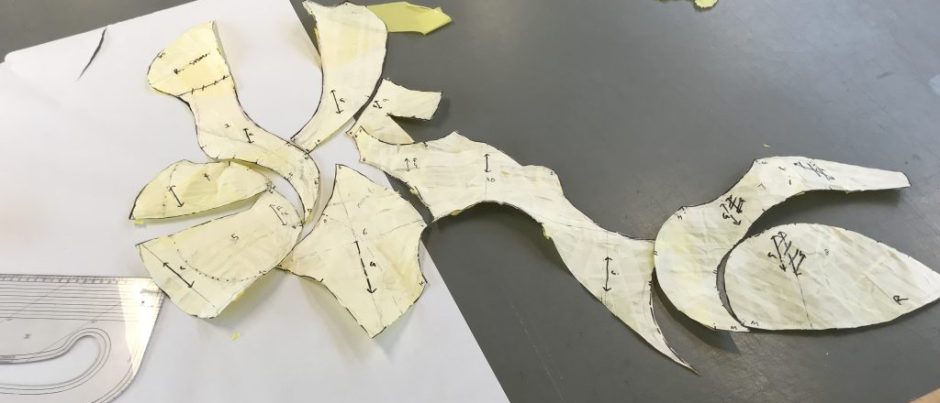I felt apprehensive and excited about the first day of workshops. However, as soon as I had spoken to some of my peers, and enjoyed the polite conversational structure that the string exercise afforded, my apprehension was eased. I thought that the visual evidence of turn taking in this icebreaker was very interesting, and would work particularly well in balancing out participation during creative discussions in the studio.

However, this idea was challenged by a peer in the second workshop in a discussion around styles of participation and cultural dynamics. Rather than it being a balancer, it became apparent that it may also cause anxiety in its visual pressure to participate. In relation to the specific issue of Asian students often being the quietest within participation activities, Tim mentioned that some of us may find the intercultural practices training at UAL helpful, which I made a note to sign up to at the next opportunity.
The practical, physical, collective task of making a timeline on the wall using bright colours made the subject matter far more engaging, and the information much easier to relate to than it may otherwise have been. The visual signposting of events that have had some impact on or related to the subject matter invited us to make and acknowledge connections, without needing to delve too deeply into every single item of the timeline. I wondered if I could use this type of task to help decolonise some of my teaching around European costume making methods. I could, for example, utilise some of the events detailed in Fashion History: A Global View (Welters and Lillethun, 2018) to contextualise culturally and socially weighted historical garments such as bustles, corsets and bodices.

In relation to the content of this exercise there was a very interesting discussion around the teaching and learning of technical craft skills in opposition to academic research and critical thinking. There was a general consensus among some of the louder voices in the room that the students seem to have more of a hunger to learn craft skills, and are generally expressing disinterest in academic practice. This called into question the reasons that students choose to study their subjects at university at all, and the way in which degrees are currently the primary way of gaining recognition for the study of the arts.
Reflecting on this discussion, I do not see these as distinctly separate from one another. I think that tactile process are thinking processes in the same way that mind is body, and rational is emotional (Jenkins, 2022). This is something which I have always felt in my own creative practice, but have recently had many interesting discussions around with my colleague Verity Cleary, who has been researching and developing concepts around critical thinking through materials as a pedagogic tool, which I hope to bring into my own teaching practice.
(477 words)
References
Welters, L. and Lillethun, A. (2018) Fashion History: A Global View. London: Bloomsbury Publishing.
Jenkins, C. (2022) Sad Love. Cambridge: Polity Press.
